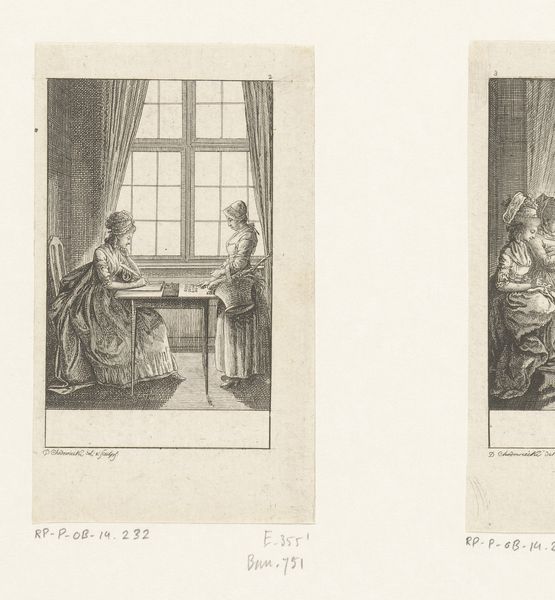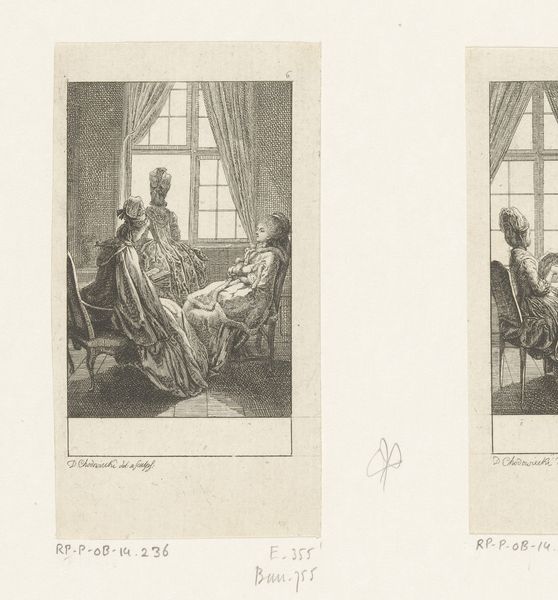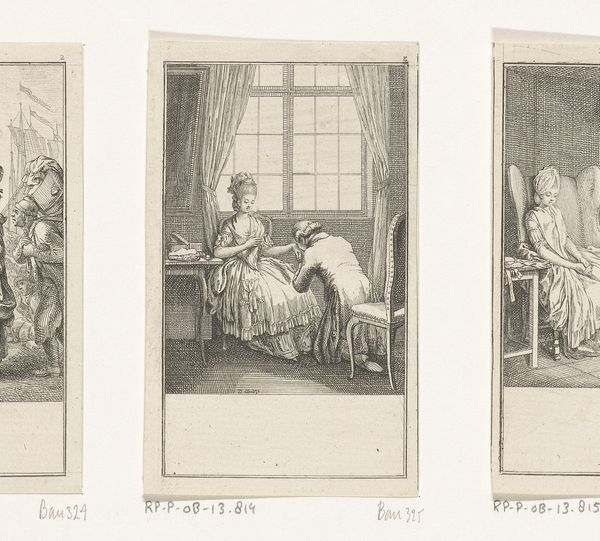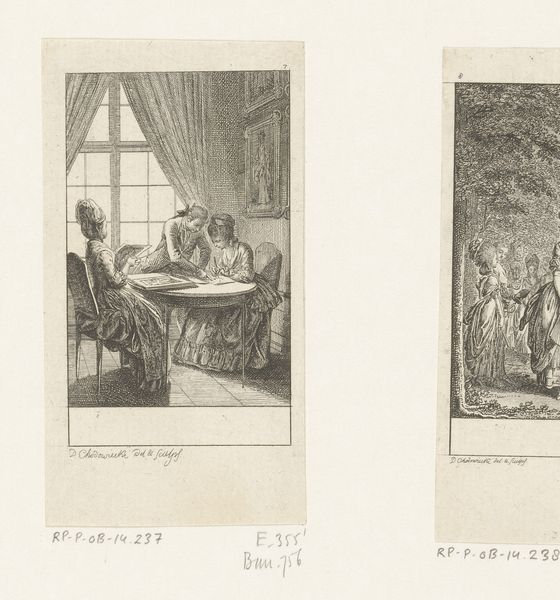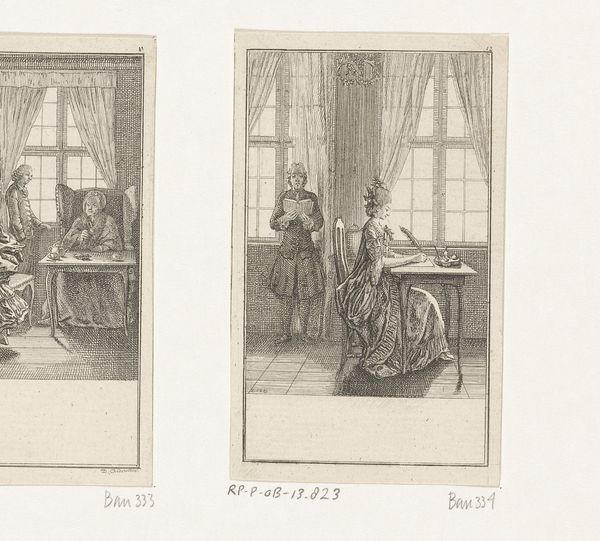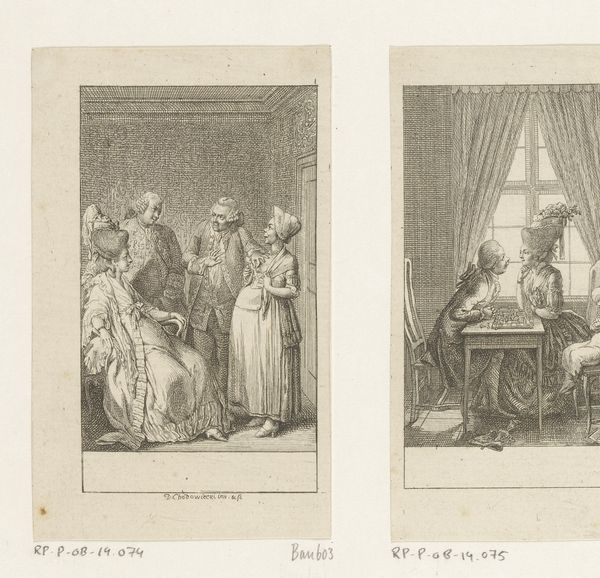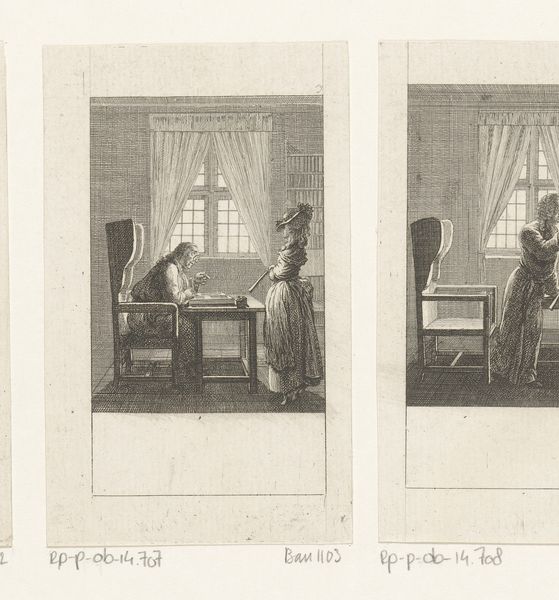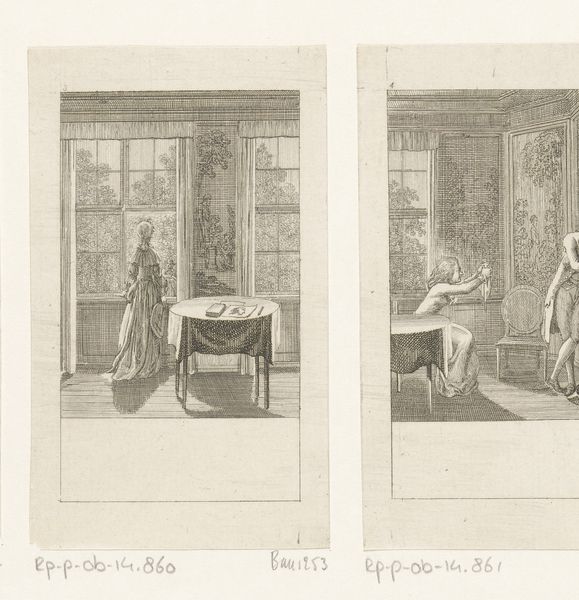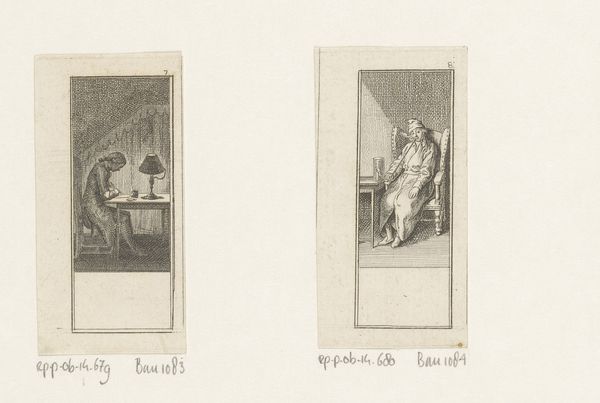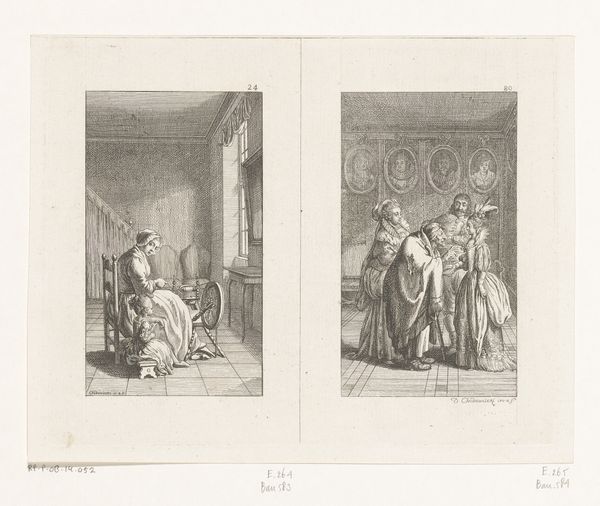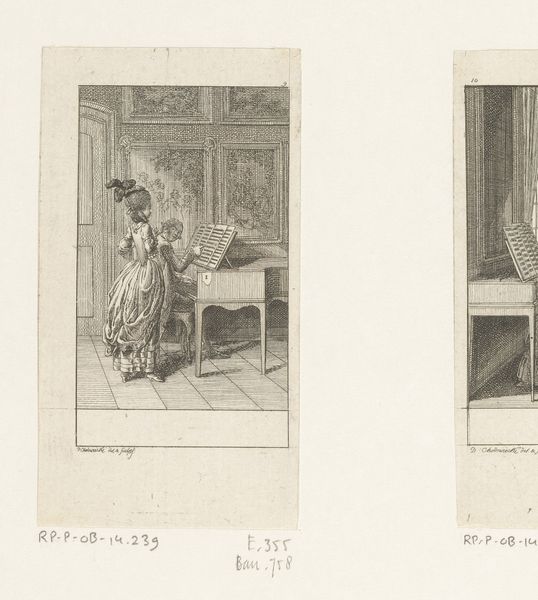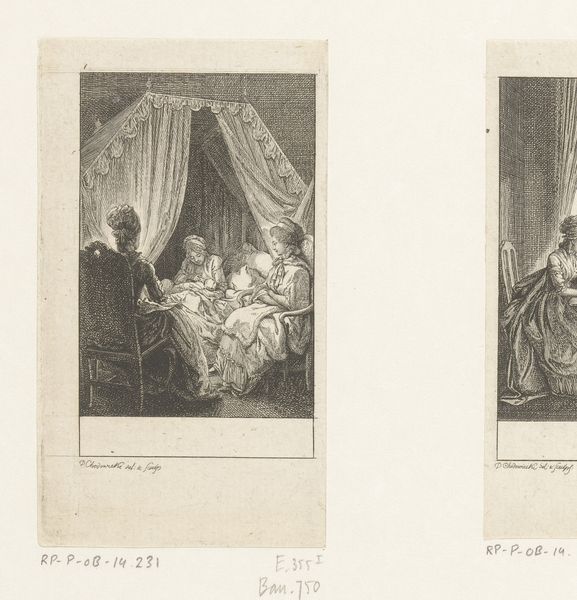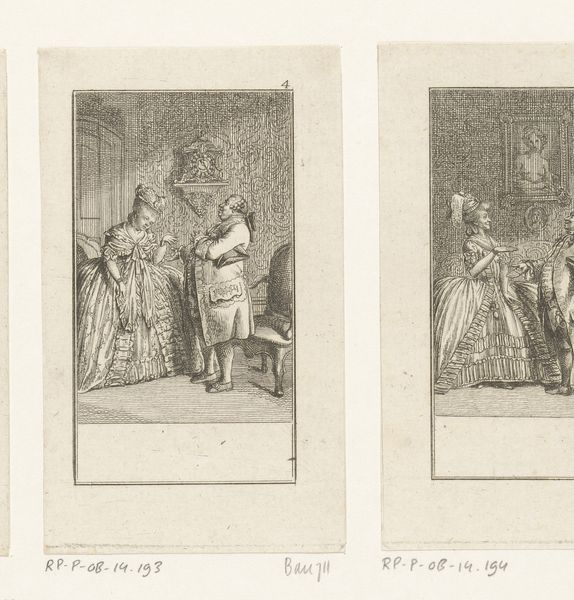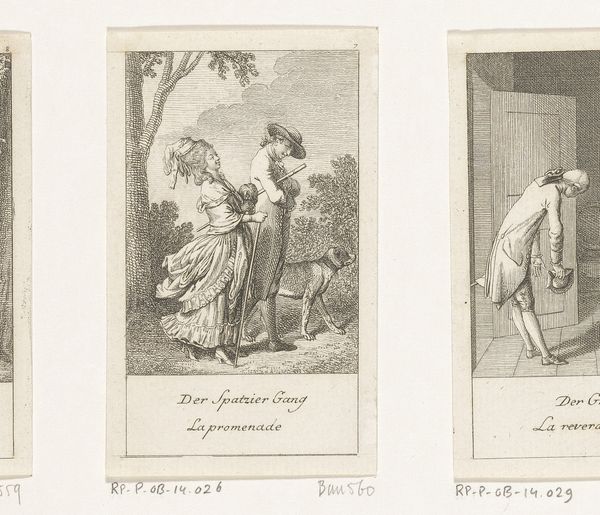
Dimensions: height 109 mm, width 55 mm
Copyright: Rijks Museum: Open Domain
Curator: Today, we're looking at Daniel Nikolaus Chodowiecki's "Naaiende dames," created around 1780. It's an engraving, currently held at the Rijksmuseum. What are your initial thoughts? Editor: I’m struck by the almost obsessive detail rendered with such simple lines. The fabric of their dresses, the way the light falls through the window… It’s a world rendered meticulously through the craft of engraving. Curator: Exactly. Chodowiecki uses that meticulous detail to depict the everyday lives of women, focusing on the domestic sphere. How do you see this artwork engaging with broader societal narratives about women's roles in the late 18th century? Editor: Well, it's clear this is a space of production, albeit a domestic one. The means of labor are very visible—the tools, the textiles—suggesting a degree of female agency through this work, yet within strictly defined social confines. Were these ladies producing luxury goods for the rising bourgeois? What type of materials are present here, and can we connect it to other means of production during the period? Curator: The print serves as a crucial social commentary, subtly yet powerfully subverting patriarchal structures. Depicting women engaged in what was then considered 'suitable' work, it underscores their economic contributions while suggesting their confinement to prescribed roles. Think about how their individual identities are softened within the group setting. This reflects larger social forces at work that attempted to minimize female self-determination. Editor: I also see the value in it because of its availability of prints in circulation at the time. This brings me back to thinking about consumption—this print most likely wasn’t made for aristocratic patronages. Curator: Precisely. Chodowiecki's choice of print as a medium suggests an intentional engagement with a wider audience. It democratizes the representation, making it accessible to a growing middle class. The themes resonate far beyond the elite circles. Editor: The materiality, then, inherently impacts its message and intended reach. Focusing on the repetitive labor within these roles, he unveils women’s contributions while offering subtle commentary on class. This tension is where I find meaning here, connecting this domestic labor scene with the economic landscape of the time. Curator: A pertinent point to ponder, showcasing how art can simultaneously reflect and gently critique the very fabric of society it represents. Thank you. Editor: My pleasure, thinking through the texture and context always reshapes my appreciation.
Comments
No comments
Be the first to comment and join the conversation on the ultimate creative platform.
